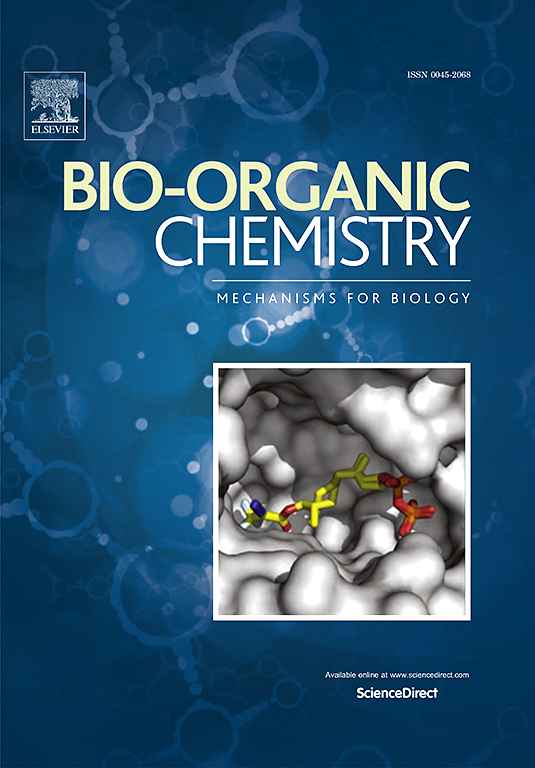A novel MMP-9 inhibitor exhibits selective inhibition in non-small-cell lung cancer harboring EGFR T790M mutation by blocking EGFR/STAT3 signaling pathway
IF 4.5
2区 医学
Q1 BIOCHEMISTRY & MOLECULAR BIOLOGY
引用次数: 0
Abstract
The T790M secondary mutation in EGFR confers therapeutic resistance to EGFR-TKIs, leading to poor outcomes. Non-small-cell lung cancer (NSCLC) harboring EGFR T790M mutation is incurable and there is an urgent need for improved therapeutics. Here we report the identification of a small compound, MG-3C, that kills NSCLC cells with T790M mutation while sparing lung cancer cells without T790M mutation. We found that MG-3C activity targets EGFR-STAT3 signaling pathway in NSCLC through direct inhibition of matrix metalloproteinase 9 (MMP-9), ultimately leading to G2/M phase arrest, growth inhibition and apoptosis. Compared with the reported MMP-9 inhibitor Ilomastat, MG-3C shows high anticancer activity and affinity for targets. MG-3C forms hydrogen bonds with the ASP-113, ASP-201 and HIS-203 amino acid residues of MMP-9 with a docking fraction of −9.04 kcal/mol, while Ilomastat forms hydrogen bonds with the GLN-169, ASP-201 and HIS-203 amino acid residues of MMP-9 with a docking fraction of −5.98 kcal/mol. The spatial structure composed of ASP-113, ASP-201, and HIS-203 of MMP-9 provides a new coordinate for the design of MMP-9 inhibitors. Most importantly, subcutaneous and oral administration of MG-3C elicit dramatic regression of NSCLC xenograft tumors harboring T790M mutation as well as favorable biosafety profile in vivo, suggesting that MG-3C may be a potential candidate for NSCLC harboring T790M mutation.

求助全文
约1分钟内获得全文
求助全文
来源期刊

Bioorganic Chemistry
生物-生化与分子生物学
CiteScore
9.70
自引率
3.90%
发文量
679
审稿时长
31 days
期刊介绍:
Bioorganic Chemistry publishes research that addresses biological questions at the molecular level, using organic chemistry and principles of physical organic chemistry. The scope of the journal covers a range of topics at the organic chemistry-biology interface, including: enzyme catalysis, biotransformation and enzyme inhibition; nucleic acids chemistry; medicinal chemistry; natural product chemistry, natural product synthesis and natural product biosynthesis; antimicrobial agents; lipid and peptide chemistry; biophysical chemistry; biological probes; bio-orthogonal chemistry and biomimetic chemistry.
For manuscripts dealing with synthetic bioactive compounds, the Journal requires that the molecular target of the compounds described must be known, and must be demonstrated experimentally in the manuscript. For studies involving natural products, if the molecular target is unknown, some data beyond simple cell-based toxicity studies to provide insight into the mechanism of action is required. Studies supported by molecular docking are welcome, but must be supported by experimental data. The Journal does not consider manuscripts that are purely theoretical or computational in nature.
The Journal publishes regular articles, short communications and reviews. Reviews are normally invited by Editors or Editorial Board members. Authors of unsolicited reviews should first contact an Editor or Editorial Board member to determine whether the proposed article is within the scope of the Journal.
 求助内容:
求助内容: 应助结果提醒方式:
应助结果提醒方式:


